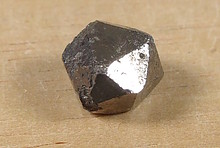Home PageAbout MindatThe Mindat ManualHistory of MindatCopyright StatusWho We AreContact UsAdvertise on Mindat
Donate to MindatCorporate SponsorshipSponsor a PageSponsored PagesMindat AdvertisersAdvertise on Mindat
Learning CenterWhat is a mineral?The most common minerals on earthInformation for EducatorsMindat ArticlesThe ElementsThe Rock H. Currier Digital LibraryGeologic Time
Minerals by PropertiesMinerals by ChemistryAdvanced Locality SearchRandom MineralRandom LocalitySearch by minIDLocalities Near MeSearch ArticlesSearch GlossaryMore Search Options
The Mindat ManualAdd a New PhotoRate PhotosLocality Edit ReportCoordinate Completion ReportAdd Glossary Item
Mining CompaniesStatisticsUsersMineral MuseumsClubs & OrganizationsMineral Shows & EventsThe Mindat DirectoryDevice SettingsThe Mineral Quiz
Photo SearchPhoto GalleriesSearch by ColorNew Photos TodayNew Photos YesterdayMembers' Photo GalleriesPast Photo of the Day GalleryPhotography
╳Discussions
💬 Home🔎 Search📅 LatestGroups
EducationOpen discussion area.Fakes & FraudsOpen discussion area.Field CollectingOpen discussion area.FossilsOpen discussion area.Gems and GemologyOpen discussion area.GeneralOpen discussion area.How to ContributeOpen discussion area.Identity HelpOpen discussion area.Improving Mindat.orgOpen discussion area.LocalitiesOpen discussion area.Lost and Stolen SpecimensOpen discussion area.MarketplaceOpen discussion area.MeteoritesOpen discussion area.Mindat ProductsOpen discussion area.Mineral ExchangesOpen discussion area.Mineral PhotographyOpen discussion area.Mineral ShowsOpen discussion area.Mineralogical ClassificationOpen discussion area.Mineralogy CourseOpen discussion area.MineralsOpen discussion area.Minerals and MuseumsOpen discussion area.PhotosOpen discussion area.Techniques for CollectorsOpen discussion area.The Rock H. Currier Digital LibraryOpen discussion area.UV MineralsOpen discussion area.Recent Images in Discussions
Improving Mindat.orgadamite?

2nd Aug 2006 13:48 UTCMarius Utens
marius utens
2nd Aug 2006 14:40 UTCUwe Kolitsch Manager
You should contact Steve Rust directly; he will be able to tell you if the cuprian adamite was chemically analysed or not.

4th Aug 2006 14:52 UTCMarius Utens
I think that an photo in the photo of the day gallery (number 12982 )must have an correct name.I think it must be olivenite on an adamite x
marius utens
4th Aug 2006 16:22 UTCUwe Kolitsch Manager

4th Aug 2006 17:05 UTCAlan Plante
I collect Lavrion District specimens, too. Looking at Steve's photo I find that I can not be sure if it is adamite-on-adamite or olivenite-on-adamite. The adamite found at the Lavrion District mines is so variable that it can - and often is - mistaken for other species, including olivenite at times.
Steve is very careful about his identifications - and he knows Lavrion District minerals very well - so I would give him the benefit of the doubt unless there is substantial proof that he is mistaken.
Lefteris Rantos in Athens might be able to help here. I don't know of anyone who frequents Mindat who knows more about Lavrion minerals than him. - He's helped me learn about them a great deal.
Anyway, let's wait and hear what Steve has to say. I'd be surprised if he is mistaken.
Regards
Alan
4th Aug 2006 17:38 UTCPeter Haas
Adamite forms a series with Olivenite. Continuous substitution of Zn2+ in adamite by Cu2+ leads to cuprian adamite, then to zincian olivenite and, finally, to olivenite. Whereas Cu2+ is a colour centre, Zn2+ is not, so it is only the copper that is responsible for the colour in all copper-bearing species of this series. The shade of the colour, however, does not only depend on the copper content, but also on the size of the crystals (defining the path of light through the specimen, see Lambert-Beer's law), the roughness of its surface (to which the intensity loss by reflection is related), the colour, refractive index and reflectivity of the matrix, etc. etc. One also has to keep in mind that there are further impurities present that can also act as colour centres (Fe2+, Mn2+, Co2+, Ni2+ to name just a few) and alter the shade of the colour. Moreover, many transition metals have high specific extinction values (i.e. logarithm of the fraction of light intensity absorbed per unit concentration and per unit path length, see Lambert-Beer's law). This means that a faint metal content already leads to an intense colour, but it also means that the relationship between the fraction of light absorbed and the concentration of the colour centre stops to be linear at rather low contents (Lambert-Beer's law only holds at high dilution). A well-known example is Co2+ in the roselite-wendwilsonite series: above a certain cobalt content, saturation occurs, i.e. a further increase of the Co2+ content does not markedly alter the colour anymore. Therefore, it is impossible to distinguish these species by visual means. With cuprian adamite and olivenite, the situation is somewhat similar.
4th Aug 2006 20:42 UTCDominik Schläfli Expert
http://www.mindat.org/photo-58524.html

5th Aug 2006 10:36 UTCMarius Utens




Mindat.org is an outreach project of the Hudson Institute of Mineralogy, a 501(c)(3) not-for-profit organization.
Copyright © mindat.org and the Hudson Institute of Mineralogy 1993-2024, except where stated. Most political location boundaries are © OpenStreetMap contributors. Mindat.org relies on the contributions of thousands of members and supporters. Founded in 2000 by Jolyon Ralph.
Privacy Policy - Terms & Conditions - Contact Us / DMCA issues - Report a bug/vulnerability Current server date and time: April 27, 2024 01:36:58
Copyright © mindat.org and the Hudson Institute of Mineralogy 1993-2024, except where stated. Most political location boundaries are © OpenStreetMap contributors. Mindat.org relies on the contributions of thousands of members and supporters. Founded in 2000 by Jolyon Ralph.
Privacy Policy - Terms & Conditions - Contact Us / DMCA issues - Report a bug/vulnerability Current server date and time: April 27, 2024 01:36:58











